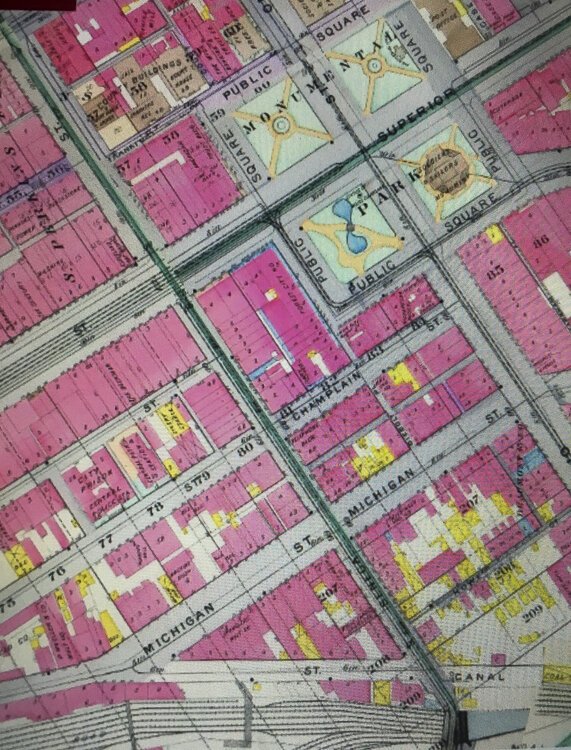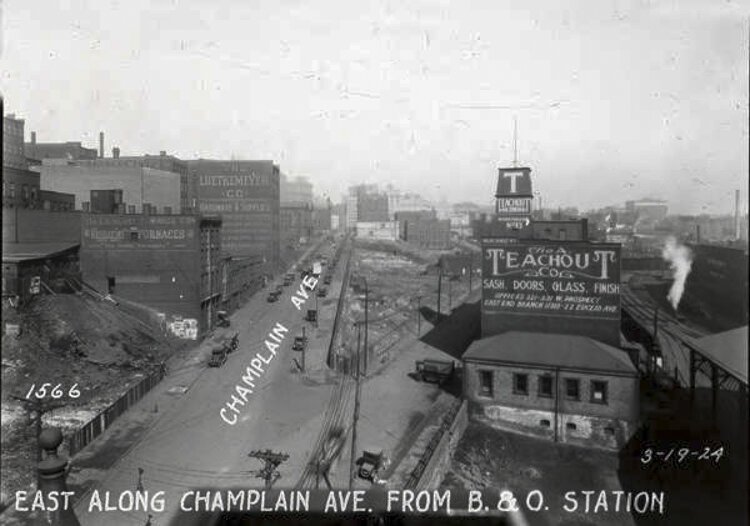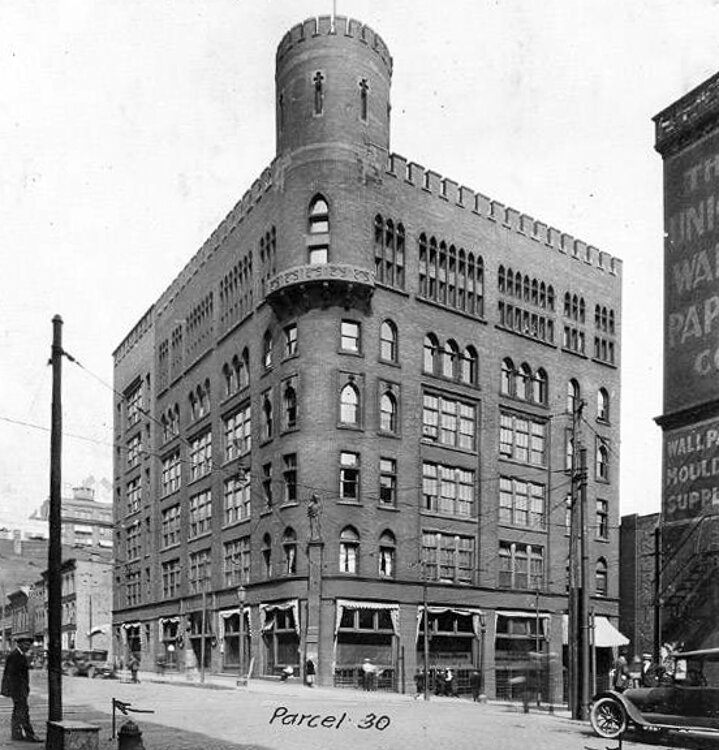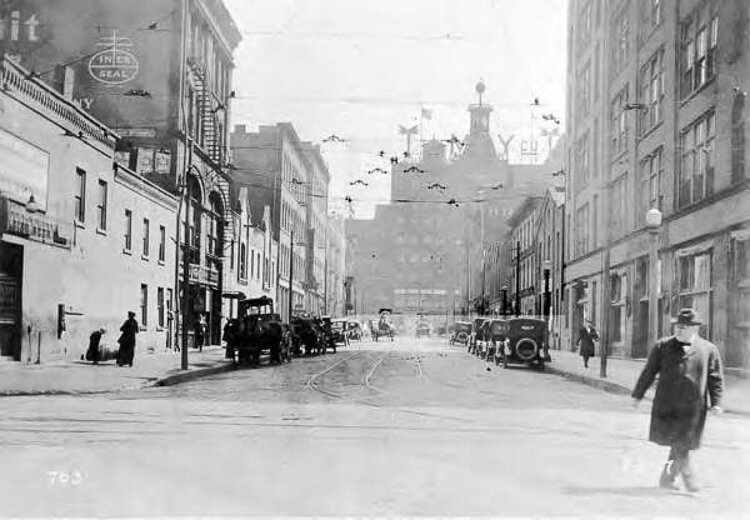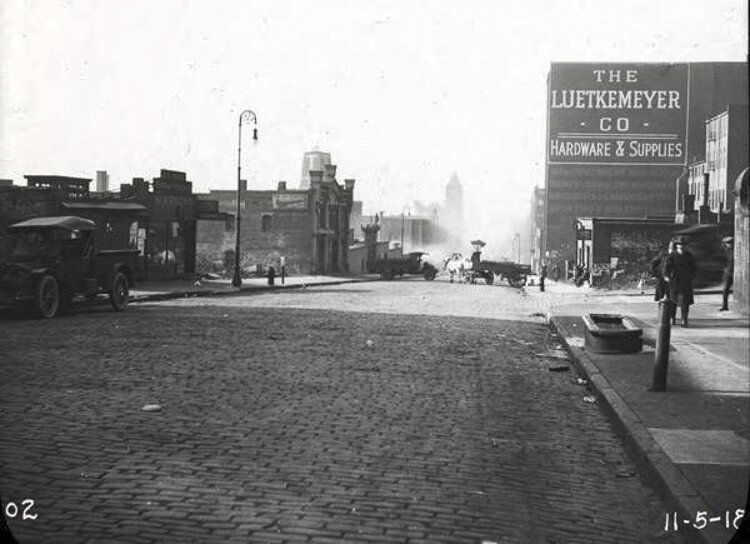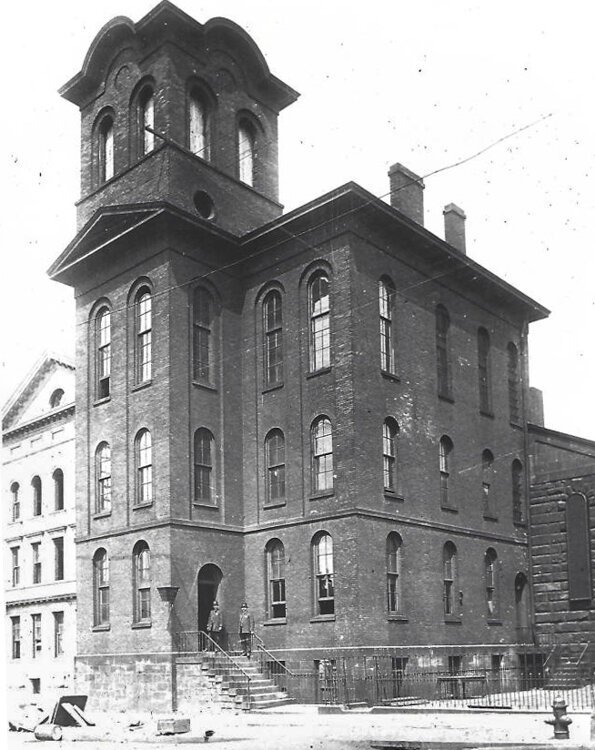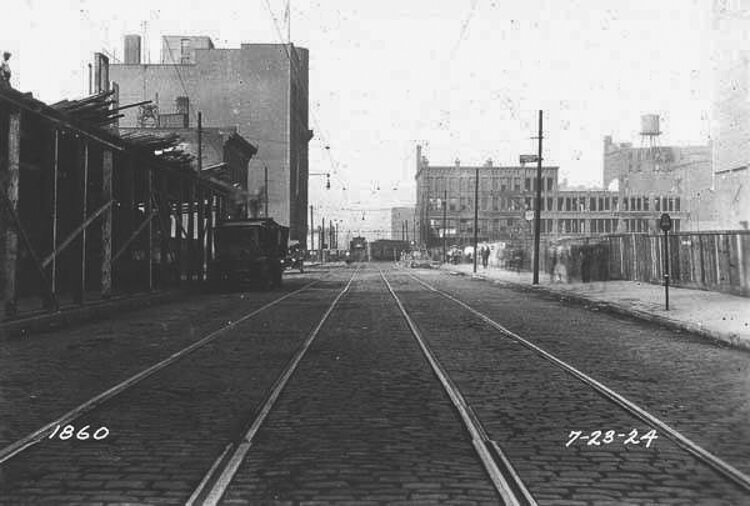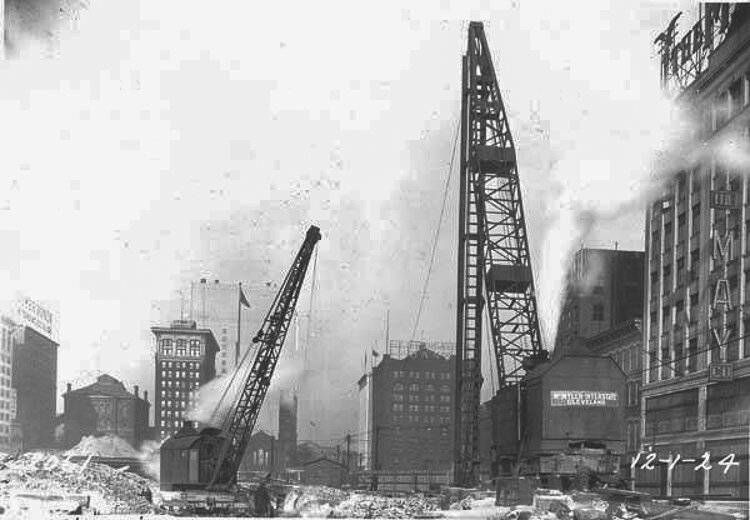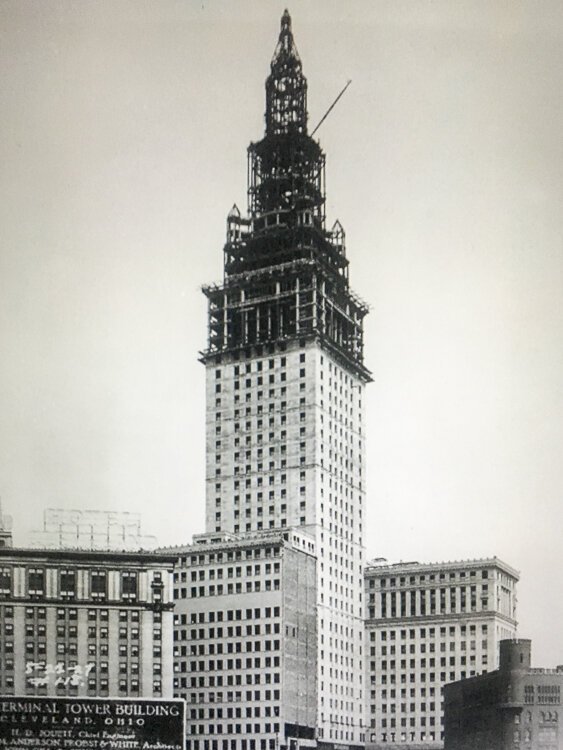
The ghosts of Champlain Street: The downtown sites lost to make way for the Terminal Tower
The Terminal Tower has been a part of Cleveland’s daily life for nearly a century. Those who knew the area before the building’s 1920s construction are nearly all gone now, and with them direct memories of the streets and commercial buildings destroyed to make way for this new complex.
 The old Ohio Bell Telephone Building, circa 1911, stood on the southeast corner of Champlain St. and Seneca St. (West 3rd St.) It was built in 1894 and demolished in 1928One of the most prominent of these lost thoroughfares was Champlain Street. Running parallel with it on the south side of Superior Avenue, it was home to the Charles Schweinfurth-designed 1894 Cleveland Telephone Company Building and the Lehman and Schmitt-designed 1893 Cleveland Police headquarters.
The old Ohio Bell Telephone Building, circa 1911, stood on the southeast corner of Champlain St. and Seneca St. (West 3rd St.) It was built in 1894 and demolished in 1928One of the most prominent of these lost thoroughfares was Champlain Street. Running parallel with it on the south side of Superior Avenue, it was home to the Charles Schweinfurth-designed 1894 Cleveland Telephone Company Building and the Lehman and Schmitt-designed 1893 Cleveland Police headquarters.
A fixture on Cleveland’s landscape for decades, Champlain Street was part of the vast area purchased by the Van Sweringen Brothers in the early 1920s as plans for their new office tower and railroad station took shape.
This project completely transformed Cleveland’s urban landscape.
Among other well-known buildings on the street were May’s Drugstore at the intersection of Champlain and Ontario Streets, and the H.W Boltz Livery Stable, soon to become obsolete with the rising popularity of cars.
Schweinfurth’s Cleveland Telephone Company Building was a Cleveland landmark. Constructed in the early 1890s when the architect was at the height of his popularity, this structure was built for the ages. It had an internal structure made of steel girders and screen walls substantially built of stone and brick. At six stories, it was the tallest building on the street.
For the next three decades it was the center of Cleveland’s communications industry.
It stood at the intersection of Champlain and West 3rd Street. It was easily recognized from a distance because of its prominent round tower.
 Northeast corner of Champlain St.. and West 3rd St. showing the former location of Kullmann's Restaurant, shoe repair shop and the former location of the C. A. Bresler Sons Co. - 1922Arguably the finest building on the street, in the end it outlasted all the others, being the final building to be torn down in the footprint of the upcoming Terminal Tower. The delay was because of the importance of not disrupting telephone service any more than necessary.
Northeast corner of Champlain St.. and West 3rd St. showing the former location of Kullmann's Restaurant, shoe repair shop and the former location of the C. A. Bresler Sons Co. - 1922Arguably the finest building on the street, in the end it outlasted all the others, being the final building to be torn down in the footprint of the upcoming Terminal Tower. The delay was because of the importance of not disrupting telephone service any more than necessary.
The new Ohio Bell Building on Huron Road took its place. Designed by Hubbell & Benes, it was 365 feet tall. For a matter of just months, it was Cleveland’s tallest building. That title quickly passed to the new Terminal Tower, which once completed, signed the death warrant of Schweinfurth’s building, which was destroyed early in 1928.
The Champlain Street Police Station saw its share of Cleveland history. Designed in part by the son of Cleveland’s longest serving chief of Police, Jacob Schmitt, for 30 years it saw a procession of cops and robbers—since it included courtrooms as well as the city jail. The complex also included a stable for the horses that pulled Cleveland Police Department patrol wagons before the department was mechanized.
Other buildings on the street were low rise commercial structures that housed a wide variety of business concerns—from building contractors and hardware stores to secondhand clothing stores and restaurants. The lost buildings also included a Cleveland fire station.
All in all, the destroyed neighborhood buildings represented a large capital investment and generations of hard work and vivid memories.
In the end none of this mattered. The previous importance of these buildings failed to save them.
The Terminal Tower called for the ruthless destruction of the entire neighborhood, and literally changed the landscape as the original sloping hillside leading to the Cuyahoga river’s edge vanished.
 Champlain St. runs east/west in the middle of this image from around 1922-23Those who visit the area today will find no evidence that any of this ever existed. The neighborhood policemen and the criminals they chased; the teamsters and their horse drawn wagons; the streetcars and the passengers they carried; all vanished into memory almost a century ago.
Champlain St. runs east/west in the middle of this image from around 1922-23Those who visit the area today will find no evidence that any of this ever existed. The neighborhood policemen and the criminals they chased; the teamsters and their horse drawn wagons; the streetcars and the passengers they carried; all vanished into memory almost a century ago.
Opened with great fanfare and touted for years as the tallest building standing between New York and Chicago, the Terminal Tower is now surpassed by Key Tower—a stone’s throw away on the other side of Public Square.
If the fate of Champlain Street and the buildings that once lined it is any hint of things to come, one is left to wonder what the fate of the newer buildings will be.
It seems that nothing lasts forever, even if its builders were certain that they were building for posterity.
As the Van Sweringen brothers would be quick to remind us, all glory is fleeting.
About the Author: Tom Matowitz
Recently retired after a 37-year career teaching public speaking, Tom Matowitz has had a lifelong interest in local and regional history. Working as a freelance author for the past 20 years he has written a number of books and articles about Cleveland’s past. He has a particular interest in the area’s rich architectural history.


